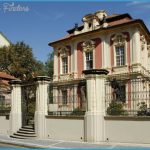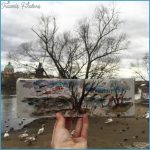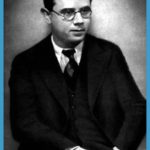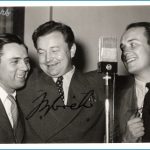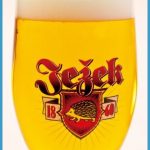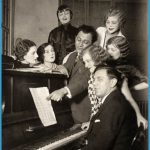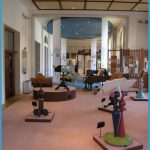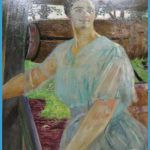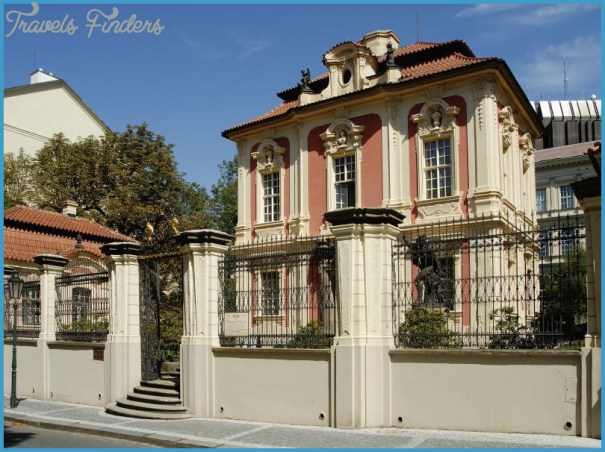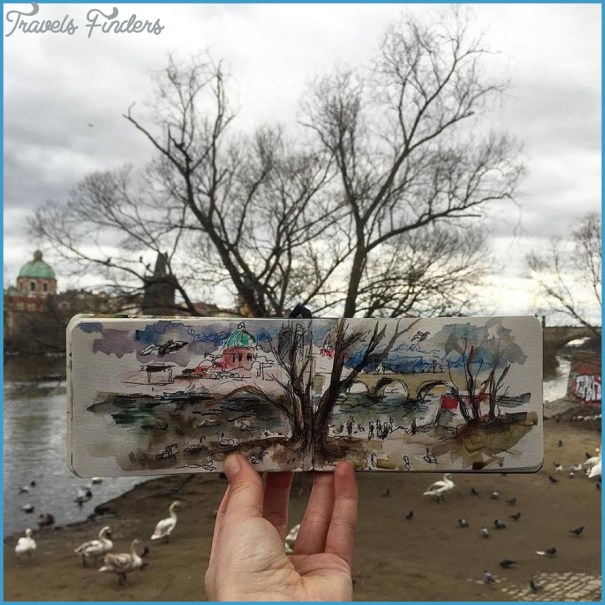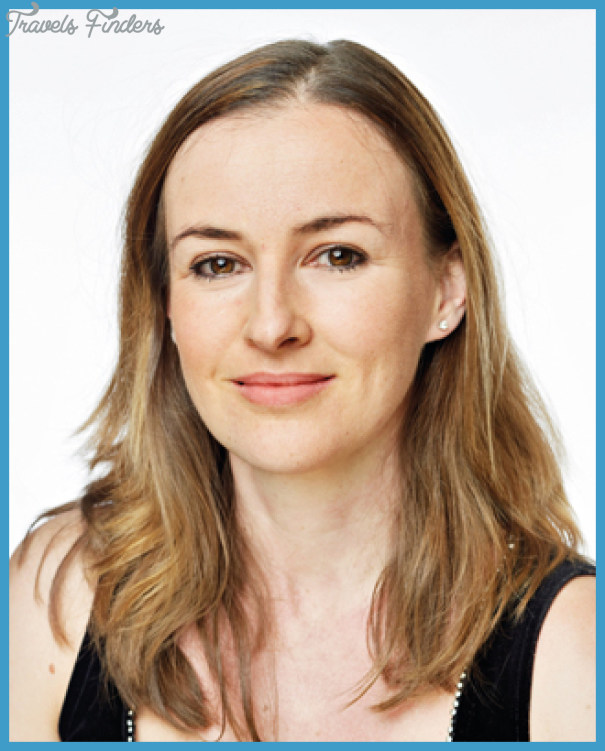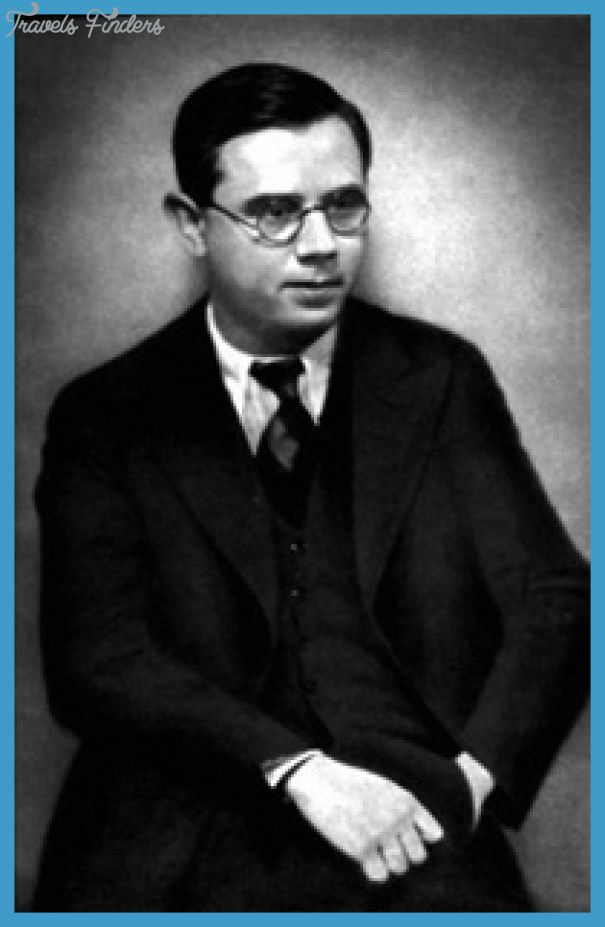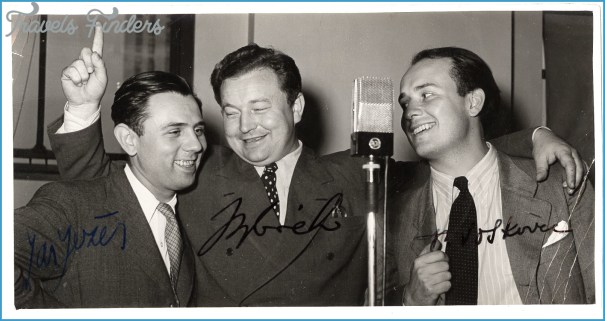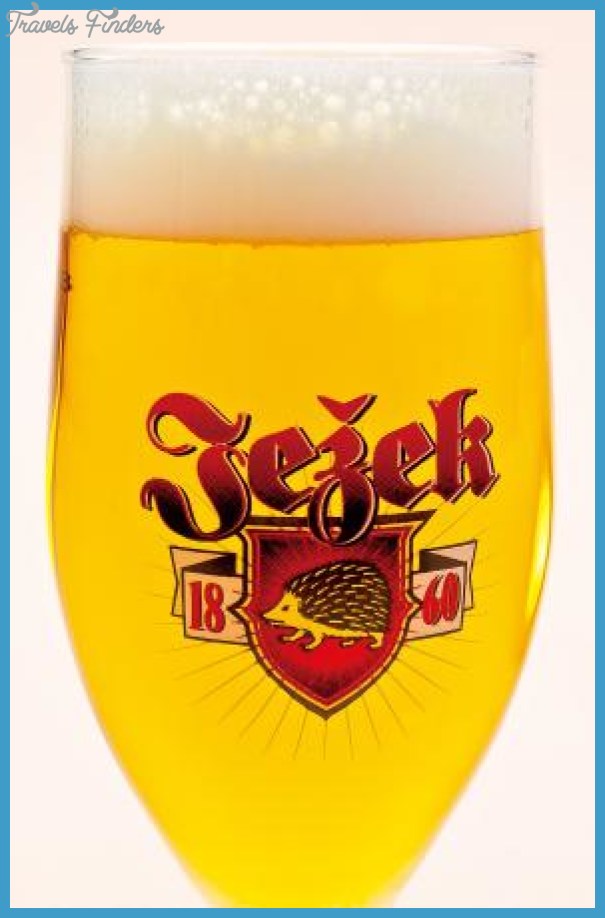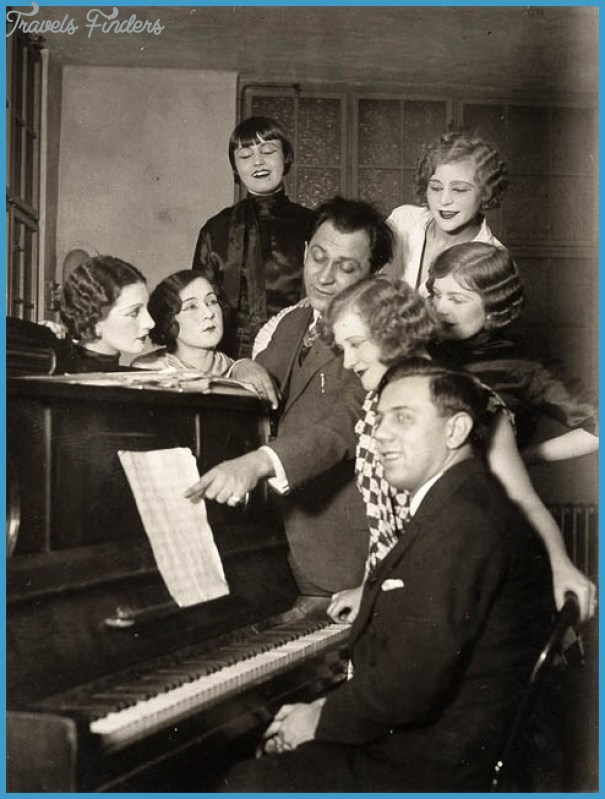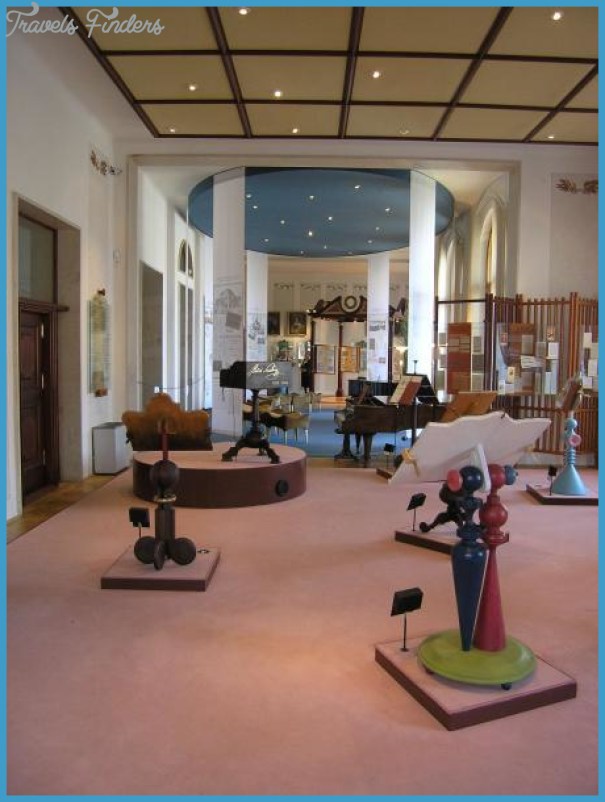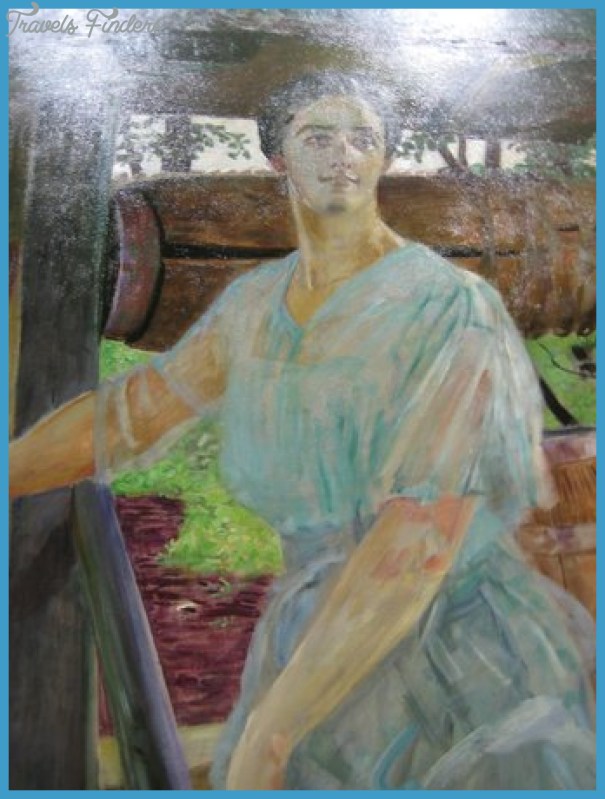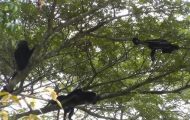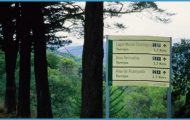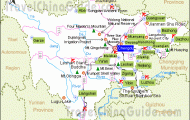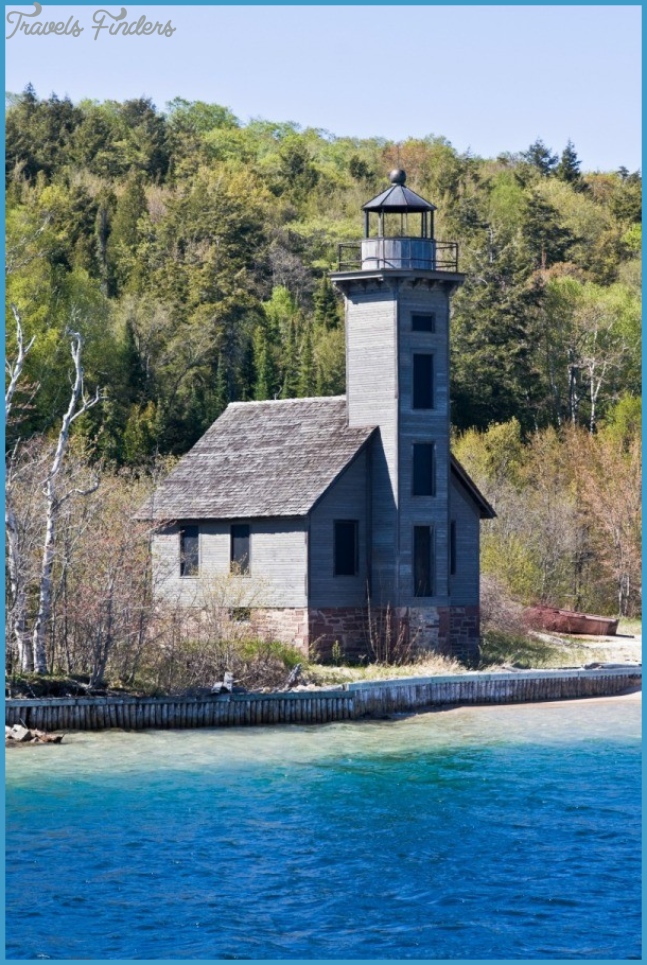JEZEK MUSEUM
A stone’s throw from the Charles Bridge, on the right bank of the Vltava river in the Prague Old Town (Stare Misto), is Kaprova Street. The composer Jaroslav Jezek (1906-42) lived there with his parents in a first-floor, co-op flat at no.10 during the 1920s and 30s. Jezsek was a talented composer of faintly outrageous Czech theatre music, whose career intertwined with those of two popular comedians, Jin Voskovec and Jan Werich. He conducted his jazzy, satirical scores (songs and dances) at the Prague Free Theatre during the 1930s and, when it had to close down at the end of 1938, he and the comedians emigrated to the USA, where he died three years later.
If Jezek’s life was short, it was also harsh, for he suffered from a series of disabilities that would defeat most aspiring musicians. Born partially sighted, in the nearby Zizkov district of Prague (named after a 15th-century military leader who was blinded in battle), his hearing was impaired after a bout of scarlet fever, and he also suffered from a renal disease. Before he could pursue his studies in music, he went to a school for the blind (1912-21), then the Dvorsakeum Music School; finally, in 1924, he was accepted into the Academy of Music, where he was admired for his masterly improvisation at the piano. He wore thick glasses; to write his music, he had to rely on large-format manuscript paper and an oversized pencil.
In the 1930s the small room at the front of the flat, which had served as his father’s tailoring workshop, became his study. To enhance his sight the room was decorated in complementary blue tones -light walls with a darker ceiling and skirting boards; even the sheer curtains were dyed blue. The grand piano is black; so, oddly, is some of the functionalist furniture (sofa, chairs, cupboards, desk).
The tubular-arm furniture, from around 1930, was designed by a friend, Frantissek Zelenka, who created stage sets at another Prague theatre with which Jezsek was associated, the Osvobozene Divadlo. In spite of his poor sight, he collected a substantial library of literature and, remarkably in the circumstances, miniature scores of the standard repertory, especially operas.
JEZEK MUSEUM Photo Gallery
Near the end of his life he married a fellow Czech emigrant, Frantisska Becakova. In 1947 she returned to Prague with his ashes which, after a service at the Rudolfinum, were interred at Olsany Cemetery. The Blue Room was opened to the public in 1983, shortly before her death. It is now under the auspices of the Czech Museum of Music in Prague.
At first, the interest seems slender. The building is shabby, although there is a bust and memorial plaque to Jezsek mounted on the street facade. The entrance and staircase are unwelcoming. There is a sign on the door of the flat, but it is slightly unsettling to be ushered from the landing, past a screen that hides the rest of the flat from view, into the Blue Room, and then left there alone. On the desk are photographs of a smiling Jezsek at the piano and with the comedians; his oversized writing implements, pocket watch and pipe; his poignant thick glasses. Above the desk is a framed certificate of membership of the Czech Academy of Science and Art, awarded posthumously in 1946. A violin hangs on the adjacent wall and inscribed banners are draped nearby. On the piano are copies of his published sheet music. A large-face clock, a statuette and a folk instrument perch on top of the larger of the two bookcases. A modest legacy, some may say, but in its way the Blue Room makes a very strong impression on the visitor.
In New York, where in 1941 he founded the Czechoslovak Choral Group, his friends established a Jaroslav Jezsek Foundation in his memory.
The Chodsko region, in the southwestern corner of the Czech Republic, on the old route between Regensburg and Prague, has always been a politically sensitive one with sturdy, individual traditions. The composer Jindrsich Jindrsich was born in a village there, Klend pod Cerchovem, in 1876, and after training in Prague (he was a pupil of Novak, and later accompanist to the renowned soprano Emmy Destinn) he spent most of his life in its main town, Domazslice, where in 1967 he died. He was a passionate student of Chodsko traditions and published a 26-volume ethnographic work as well as collecting numerous folk melodies and texts. The region’s music, not surprisingly, coloured his own compositions.
Jindrsich is commemorated in both Klend and Domazlice. The house of his birth no longer stands, but a plaque on the town hall, on the site of the school where his father was schoolmaster, records his birthplace, and he is buried in the local cemetery. He is also remembered in the Klend museum, which is dedicated to his friend the priest and prolific novelist Jindrsich Ssimon Baar (1869-1932): founded in 1926, in Baar’s house, it is essentially a museum of local and regional history but its collection includes some music, correspondence, photos and a few other personal items of Jindrsich’s. Among the displays is a small one devoted to him. The Domazslice display is on an altogether different scale. This is in what was once Jindrsich’s own house – a large one, formerly an orphanage or poor house -on the second floor, which is converted to museum space although certain areas, mostly to be seen through glass panels, represent his own living quarters. This is as much a museum of Chodsko folk art and ethnology as a commemoration of Jindrsich himself. He was not short of bedside reading. His bedroom was also his library, and indeed one of his picture galleries: the bookshelves are packed tight with books and journals, the walls packed tight with photographs and pictures of every sort, with ceramics, busts and statuettes crowding every surface. He was unmarried and lived alone (no woman would tolerate such circumstances) but had lady friends, as some of the pictures imply. In one alcove, or glass-partitioned area, is his piano, with musical portraits (a lovely oil of Destinn), his cello in the corner, more of his scores, photos of his friends and choirs, certificates and awards (including some national ones: he was an honoured artist’ and honoured worker’ in communist times).
A corner library off the bedroom houses most of his sheet music and miniature scores along with numerous drawings, watercolours, pastels and oils, with textiles, furniture and furnishings of Chodsko folk origins. His sofa, desk (with many ornaments) and chair, and a standing desk, are there. Many composers – among them Beethoven, Dvorsak, Smetana, Novak – are represented, mostly by plaster reliefs. There are books everywhere. More conventional museum fare appears in another room: a series of panels, with pictures, text (in Czech, German and English) and facsimiles of letters and documents, charting his life. But there is also a large gallery, chiefly devoted to the Chodsko art of glass painting, of which there are some 1400 examples on the walls and on panels, from the 18th century to Jindrsich’s own time, many on sacred topics, many free. There are also other examples of local art, pottery, wood carvings, lace, embroidery, clothing, furniture and a few folk instruments too. An archive of his extensive correspondence, or the results of his fieldwork and his own compositions, along with other family papers, is stored in a smaller room. This massive, overwhelming collection speaks eloquently of a man who clearly had limitless energy and inextinguishable enthusiasm.

